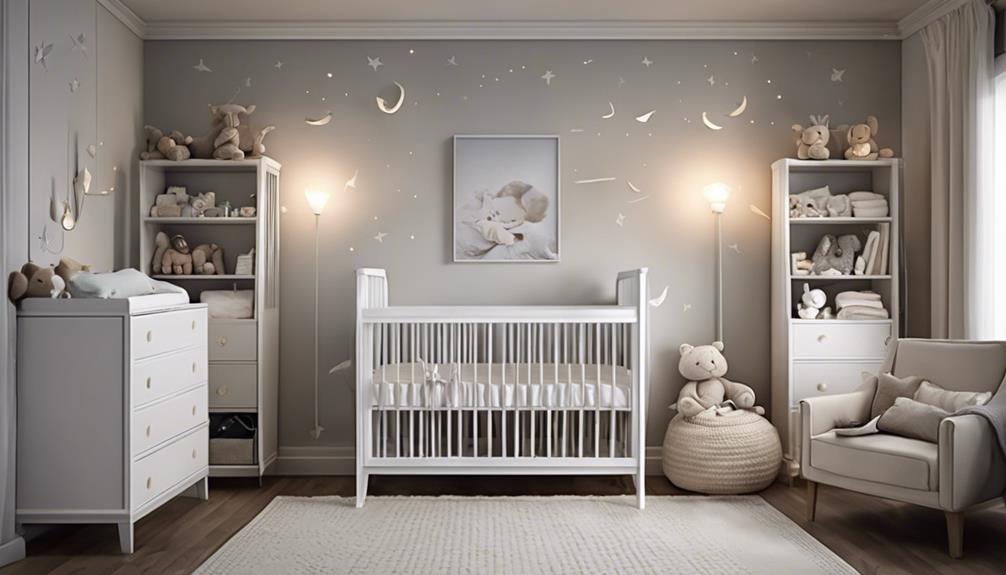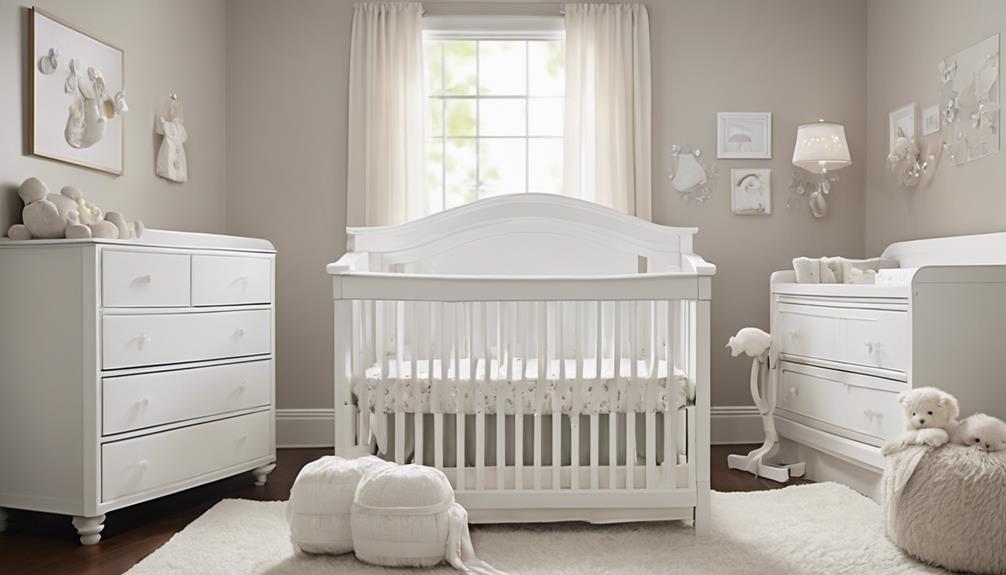As new parents, we all know the struggle of getting our newborn to sleep peacefully in a bassinet. From our own experiences, we've learned that establishing a calming bedtime routine is key to success.
But what are the specific do's and don'ts that can make this process smoother and more effective? Let's explore some practical tips that have helped many families navigate the challenge of getting their little ones to rest comfortably in their bassinets, ensuring a better night's sleep for everyone involved.
Key Takeaways
- Establish a calming bedtime routine for consistent sleep cues.
- Avoid overstimulation before bedtime to promote relaxation.
- Swaddle safely to provide comfort and security for your newborn.
- Maintain optimal room conditions like temperature and lighting for quality sleep.
Establishing a Calm Bedtime Routine
Creating a soothing bedtime routine is essential for helping your newborn settle down and prepare for a restful night's sleep in their bassinet. To establish a consistent sleep schedule, it's important to begin the bedtime routine at the same time each night. Dimming the lights and creating a calming atmosphere can signal to your baby that it's time to wind down and get ready for sleep. Incorporating soothing activities like a warm bath or gentle massage can help relax your newborn before bedtime. Avoiding important activities or screens close to bedtime is vital as they can interfere with your baby's ability to settle down and fall asleep peacefully.
Using soft, calming music or white noise can create a peaceful environment that promotes relaxation and sleep for your newborn. These sounds can help your little one to relax, unwind, and settle down for the night. By incorporating these elements into your bedtime routine, you can create a tranquil atmosphere that supports your newborn's sleep patterns and helps them drift off to dreamland comfortably.
Avoiding Overstimulation Before Sleep

To prevent overstimulation before sleep, limit stimulating activities like loud play or screen time close to bedtime. Creating a peaceful pre-sleep routine is key to helping your baby wind down and prepare for rest. Here are some tips to avoid overstimulation and promote a calm environment for better baby sleep:
- Dim the Lights: Lowering the lights signals to your baby that it's time to unwind and get ready for sleep. Soft, dim lighting can help soothe your little one and set the stage for a peaceful bedtime routine.
- Engage in Calming Activities: Gentle rocking or singing can be calming for your baby and help them relax before bedtime. These soothing activities can help shift your baby from playtime to sleep time, easing them into a restful state.
- Avoid Loud Play and Screen Time: Loud noises and screen time can overstimulate your baby, making it harder for them to settle down. Opt for quieter activities and limit exposure to screens close to bedtime to create a tranquil environment conducive to sleep.
Ensuring Proper Swaddling Technique
Ensuring a snug swaddle for your newborn is essential for their comfort and safety during sleep. Proper swaddling technique involves wrapping the baby snugly, making sure arms are secure but not too tight to allow some movement. It's vital to use a breathable swaddle blanket to prevent overheating and guarantee proper airflow. Swaddling too loosely or tightly can increase the risk of SIDS or hip dysplasia, so finding the right balance is key. Watch out for signs of overheating such as sweating or feeling hot, and adjust the swaddling layers accordingly to keep your baby comfortable.
Here is a helpful table outlining key points about proper swaddling technique:
| Proper Swaddling Technique |
|---|
| Wrap snugly |
| Use breathable blanket |
| Check for signs of overheating |
| Stop swaddling when baby shows signs of rolling over |
| Avoid swaddling too tightly or loosely |
Monitoring Room Temperature and Lighting

Maintain a room temperature of 68-72 degrees Fahrenheit for best sleep conditions to guarantee your newborn's comfort and safety during rest. It's crucial to monitor and adjust the room temperature using a thermometer to make sure your baby is cozy throughout the night.
Here are some key points to take into account:
- Use blackout curtains: Create a dark room to mimic the night environment and signal to your baby that it's time to sleep. This can help reduce any disturbances caused by external light sources.
- Utilize dim lighting: During nighttime feedings or diaper changes, opt for soft, dim lighting to minimize disruptions to your baby's sleep. This gentle lighting can help both you and your baby remain in a sleepy state.
- Avoid sleep disruptions: Prevent direct exposure to sunlight or drafts that could disturb your baby's sleep environment. By maintaining a consistent room temperature and controlling the lighting conditions, you can help your newborn establish healthy sleep patterns.
Resisting the Urge to Co-Sleep
Resisting the urge to co-sleep with your newborn is essential for promoting safe sleep practices and fostering healthy independent sleep habits. While the temptation to bring your baby into bed with you may be strong, it's important to ponder the risks involved. Co-sleeping increases the chance of SIDS, can lead to dependency on parental presence for sleep, disrupts consistent bedtime routines, and affects parental sleep patterns. Instead, following safe sleep guidelines such as room-sharing with a bassinet provides a safer alternative for newborns. This allows you to be close to your baby for feeding and comforting while still maintaining a separate sleep space.
To help you understand the importance of resisting co-sleeping, let's take a look at the comparison table below:
| Co-Sleeping | Room-Sharing |
|---|---|
| Increases SIDS risk | Provides a safer alternative |
| Can hinder independent sleep habits | Allows for closeness while maintaining separate sleep space |
| Disrupts parental sleep patterns | Supports consistent bedtime routines |
Conclusion
As parents, we all want the best for our little ones when it comes to sleep. By following these simple do's and don'ts for getting your newborn to sleep in a bassinet, you can create a peaceful and safe environment for your baby to rest.
So, why not give it a try and see the difference it can make in your baby's sleep routine? Your little one deserves a good night's sleep, and so do you.










